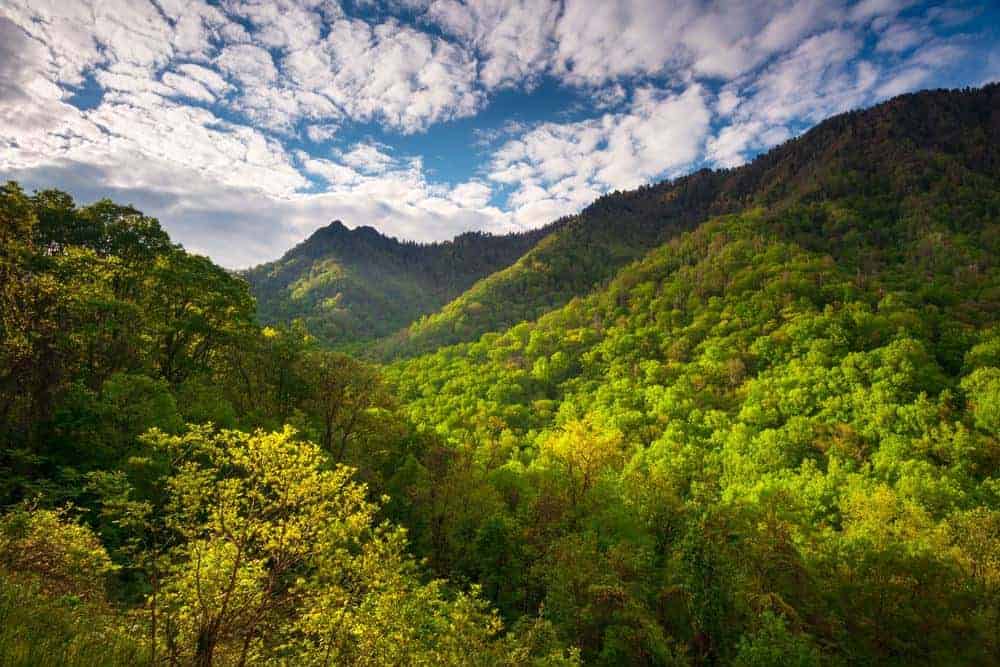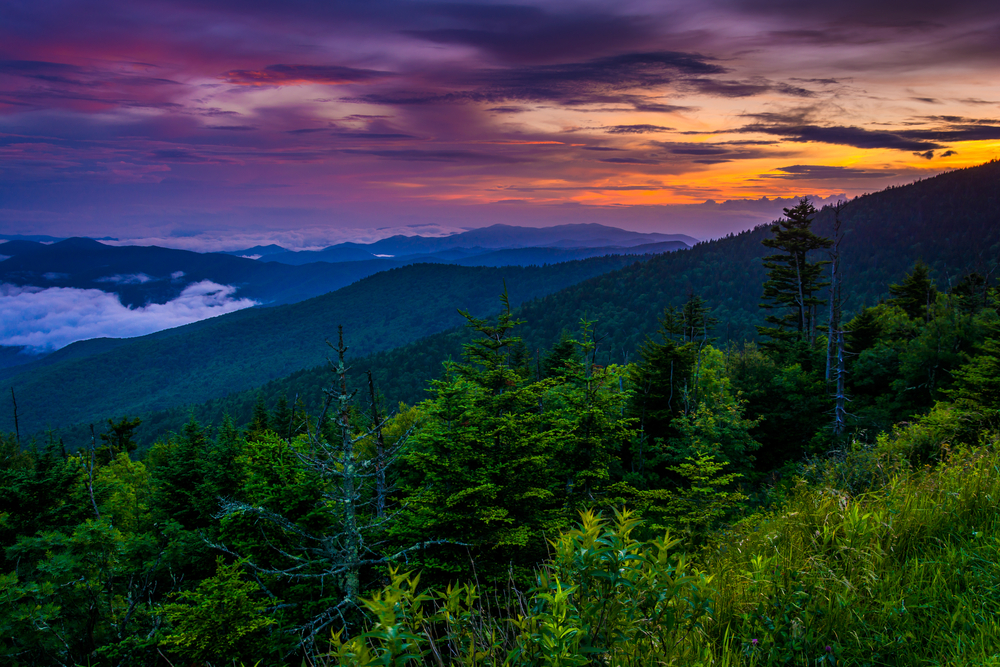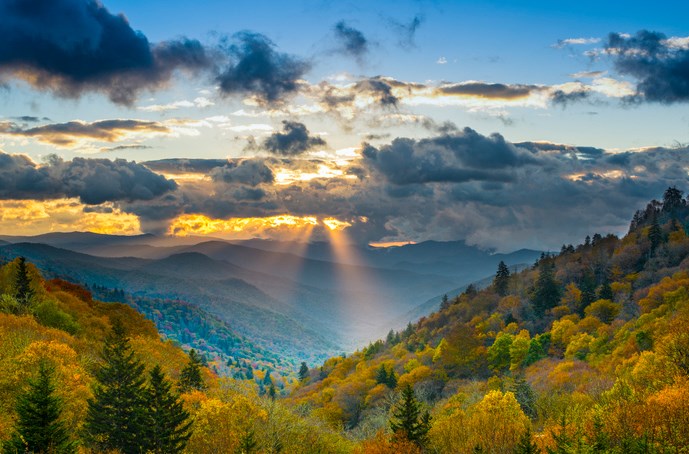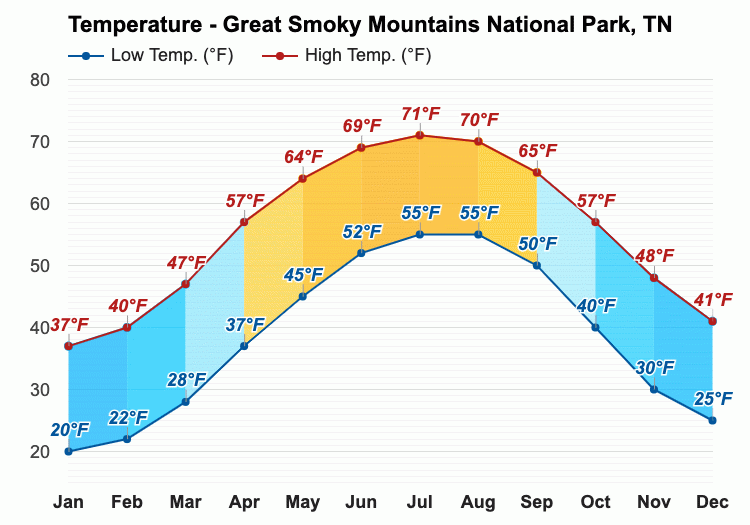Have you ever wondered what it’s like to experience all four seasons in the majestic Great Smoky Mountains? From the crisp, colorful autumns to the breathtaking blooms of spring, this enchanting landscape offers a myriad of seasonal wonders. Whether you’re captivated by the cozy charm of winter or longing for the vibrant energy of summer, the Great Smoky Mountains never fail to leave a lasting impression. So, pack your bags and embark on a journey of natural beauty as we explore the diverse and mesmerizing seasons of this spectacular mountain range.
Overview of the Great Smoky Mountains
Geographic location & general weather conditions
The Great Smoky Mountains is a majestic mountain range located in the southeastern United States, straddling the border between Tennessee and North Carolina. This iconic region covers a vast area of approximately 2,115 square miles and is renowned for its breathtaking natural beauty and rich biodiversity. The mountains are a part of the larger Appalachian Mountains and are named after the smoky mist that often envelops the peaks.
In terms of weather conditions, the Great Smoky Mountains experience a temperate climate that is greatly influenced by its high elevation. Summers are typically warm and humid, while winters can be cold and snowy. The region’s location within a temperate rainforest also contributes to its unique weather patterns, with the mountains receiving an abundance of rainfall throughout the year.
Features of the Great Smoky Mountains
The Great Smoky Mountains boast a wide array of exceptional features that make it a popular destination for nature enthusiasts and adventure seekers alike. Stunning waterfalls, such as Grotto Falls and Laurel Falls, cascade down the mountainsides, adding to the area’s natural splendor. The mountains are also known for their ancient forests, including old-growth forests that have been preserved for centuries.
One of the most iconic features of the Great Smoky Mountains is the picturesque Appalachian Trail, a 2,200-mile long hiking trail that winds through the region, offering breathtaking views and an opportunity to immerse oneself in nature. Additionally, the vibrant wildflower displays, including the famous synchronous firefly display in early summer, attract countless visitors each year.
Biodiversity in the Great Smoky Mountains
The Great Smoky Mountains are home to an unparalleled diversity of plant and animal species, earning it the title of the ‘Salamander Capital of the World’ and the nickname ‘Wildflower National Park.’ The region provides habitat for over 1,600 species of flowering plants, more than any other North American national park.
This diverse ecosystem supports a wide range of fauna as well, including black bears, white-tailed deer, elk, and over 200 species of birds. The park also serves as an important refuge for threatened and endangered species, such as the Indiana bat and the Carolina northern flying squirrel.
Spring in the Great Smoky Mountains
Temperature range & climatic conditions
Spring in the Great Smoky Mountains brings a welcome change after the colder winter months. The temperature range during springtime varies between 50°F to 70°F, providing mild and pleasant conditions for outdoor activities. However, it is important to note that temperatures can still drop at higher elevations, so dressing in layers is advisable.
In terms of climatic conditions, spring in the Great Smoky Mountains is characterized by blooming wildflowers, lush greenery, and frequent rainfall. April and May are typically the wettest months, with the mountains receiving an average of around 10 to 12 inches of precipitation.
Flora and Fauna behavior
Spring is a spectacular time to witness the awakening of nature in the Great Smoky Mountains. The forests burst to life with a vibrant display of wildflowers, including trilliums, lady slippers, and dwarf irises. The synchronous fireflies, a rare species found only in a few locations around the world, create a mesmerizing light show during late spring.
Fauna in the Great Smoky Mountains also becomes more active during the spring season. Birds return from their winter migrations, filling the air with a chorus of songs. Black bears emerge from hibernation, foraging for food after a long winter’s nap. Visitors may also have the opportunity to spot elk in the Cataloochee Valley during this time.
Popular activities and visitor recommendations
Spring offers a wide range of activities for visitors to enjoy in the Great Smoky Mountains. Hiking and walking along the numerous trails allow for an up-close experience with the blooming wildflowers and cascading waterfalls. Cades Cove, a picturesque valley, is a popular destination for biking and wildlife viewing.
For those interested in cultural experiences, attending the annual Spring Wildflower Pilgrimage is highly recommended. Led by experts, this event offers guided hikes and educational programs that delve into the regions’ unique flora and fauna. Additionally, taking a scenic drive along the Newfound Gap Road or the Roaring Fork Motor Nature Trail offers breathtaking views of the mountains’ springtime beauty.

This image is property of www.visitmysmokies.com.
Summer in the Great Smoky Mountains
Temperature range & climatic conditions
Summer in the Great Smoky Mountains brings warmer temperatures and a more vibrant atmosphere. The temperature range during summer typically varies between 70°F to 85°F, although it can occasionally reach higher temperatures. It is advisable to pack sunscreen, hats, and light, breathable clothing to stay comfortable during outdoor activities.
The climatic conditions during summer are characterized by longer daylight hours and increased humidity. Rainfall remains consistent throughout the season, with the mountains receiving an average of around 8 to 10 inches of precipitation.
Flora and Fauna behavior
Summer showcases the Great Smoky Mountains in all its verdant glory, with lush vegetation covering the landscape. The forests come alive with a symphony of green hues, as newly formed leaves create a dense canopy overhead. Wildflowers continue to bloom, albeit less prominently than in spring, and colorful butterflies add an enchanting touch to the scenery.
Fauna in the Great Smoky Mountains thrives during summer. Bird species such as the vireo, warbler, and wood thrush can be heard singing their melodious tunes throughout the day. Mammals, such as white-tailed deer and black bears, are more active during this season, taking advantage of the abundant food sources available.
Popular activities and visitor recommendations
Summer offers a plethora of outdoor activities for visitors to partake in within the Great Smoky Mountains. Exploring the various hiking trails, such as the Alum Cave Trail or the Abrams Falls Trail, allows for an immersive experience in the wilderness. Rafting and tubing on the rivers and streams provide the perfect opportunity to cool off and enjoy the region’s natural beauty.
For those seeking a break from the summer heat, the Great Smoky Mountains offer several waterfalls, such as Rainbow Falls and Mingo Falls, where visitors can take a refreshing dip in the crystal-clear pools. Attending ranger-led programs and participating in guided nature walks are also popular summer activities that allow visitors to learn more about the park’s flora, fauna, and cultural history.
Fall in the Great Smoky Mountains
Temperature range & climatic conditions
Fall is undoubtedly one of the most picturesque seasons in the Great Smoky Mountains, characterized by cooler temperatures and stunning displays of autumn colors. The temperature range during fall varies between 50°F to 70°F, providing comfortable conditions for outdoor exploration. As the season progresses, temperatures gradually decrease, with the latter part of fall experiencing frost and occasional snowfall at higher elevations.
Climatically, fall in the Great Smoky Mountains is marked by drier conditions and a decrease in overall precipitation. The decrease in moisture allows for the leaves to change into vibrant shades of red, orange, and yellow, creating a breathtaking tapestry across the mountains.
Flora and Fauna behavior
Fall is the time of year when the Great Smoky Mountains truly come alive with fiery hues. The forests transform into a kaleidoscope of colors as the leaves change, offering a mesmerizing spectacle for visitors. Iconic tree species such as sugar maples, red maples, and hickories contribute to the vibrant palette of fall foliage.
As for fauna, fall is an important time for wildlife in the Great Smoky Mountains. Animals such as black bears and white-tailed deer prepare for the upcoming winter by foraging and storing food. Migratory birds, including warblers and raptors, pass through the mountains during their journeys southward.
Popular activities and visitor recommendations
Fall is the prime season for leaf peeping and photography enthusiasts in the Great Smoky Mountains. Visitors are encouraged to embark on scenic drives along popular routes like the Blue Ridge Parkway and the Foothills Parkway, where picturesque views of the colorful landscape await. Hiking trails such as the Clingmans Dome Trail and the Rich Mountain Loop offer opportunities to witness the fall foliage up close.
Attending fall festivals, such as the Gatlinburg Craftsmen’s Fair or the Townsend Fall Heritage Festival, allows visitors to immerse themselves in the local culture and experience traditional crafts and music. Horseback riding through the mountains, particularly during the autumn colors, is also a popular activity that provides a unique perspective of the seasonal beauty.

This image is property of www.gsmnp.com.
Winter in the Great Smoky Mountains
Temperature range & climatic conditions
Winter in the Great Smoky Mountains brings a serene and tranquil atmosphere to the region, with snow-capped peaks and icy streams creating a breathtaking winter wonderland. The temperature range during winter varies between 30°F to 50°F, with higher elevations experiencing colder temperatures and increased snowfall.
Climatically, winter in the Great Smoky Mountains is characterized by shorter daylight hours and a decrease in precipitation. While snowfall is not as common in the lower elevations, the higher peaks experience a significant amount of snow, transforming the landscapes into a peaceful and pristine winter scene.
Flora and Fauna behavior
Winter brings about a period of dormancy for much of the flora in the Great Smoky Mountains. The deciduous trees shed their leaves, revealing the intricate architecture of the branches against the snowy backdrop. Evergreen species, such as eastern hemlocks and spruces, provide a touch of greenery amidst the winter landscape.
As for fauna, winter is a challenging time for wildlife in the Great Smoky Mountains. Many animals, including black bears and reptiles, hibernate or enter a period of decreased activity to conserve energy. However, the park is home to a variety of bird species, such as robins and sparrows, that brave the cold and remain in the area throughout the winter.
Popular activities and visitor recommendations
Winter presents a unique opportunity for visitors to experience the Great Smoky Mountains in a peaceful and less crowded setting. The park offers opportunities for snowshoeing, cross-country skiing, and sledding in areas where snowfall accumulates. The Clingmans Dome Road, when accessible, provides stunning panoramic views of snow-covered peaks.
Photographers and nature enthusiasts will find plenty of inspiration in capturing the stark beauty of the winter landscapes, especially during sunrise and sunset. Attending ranger-led programs, such as winter photography workshops or educational talks on winter ecology, provides valuable insights into the park’s winter ecosystem.
Effect of Climate Change on Seasons in the Great Smoky Mountains
Observed changes in seasonal patterns
As with many regions around the world, the Great Smoky Mountains have been experiencing the impacts of climate change on their seasons. One notable change is the lengthening of the growing season, with spring arriving earlier and autumn lasting longer. The spring wildflower blooms have been observed to occur earlier than in the past, altering the timing of the synchronous firefly display.
In addition, winter temperatures have become less predictable, with occasional warm spells interrupting the traditional cold and snowy conditions. This variability can have implications for the hibernation patterns of mammals and the overall health of the ecosystem.
Impact on flora and fauna
The changing climate poses significant challenges for the flora and fauna of the Great Smoky Mountains. Rising temperatures and altered precipitation patterns can affect the timing of flower blooms, potentially disrupting the intricate relationships between pollinators and plants. Some plant species may also face increased competition from invasive species that thrive in warmer conditions.
As for fauna, climate change can impact migration patterns and alter the availability of food sources. Migratory birds may face challenges if their arrival coincides with changes in insect emergence or the blooming of nectar-rich flowers. The rise in temperature can also affect the distribution and abundance of sensitive species, such as the high-elevation salamanders, that require cool and moist habitats.
Implications for tourism
The changing seasons due to climate change also have implications for tourism in the Great Smoky Mountains. Visitors may need to adjust their expectations and plan their trips accordingly, as the timing of peak foliage or wildlife activity may shift. Increased variability in weather patterns could also lead to more frequent closures or limited access to certain areas of the park, impacting visitor experiences.
However, the changing seasons also present an opportunity for education and awareness about climate change. By highlighting the impacts on the park’s ecosystems, visitors can gain a better understanding of the need for conservation efforts and sustainable practices to preserve this natural wonder for future generations.

This image is property of www.gsmnp.com.
Preparation and Precautions for Different Seasons in the Great Smoky Mountains
Safety Measures for Visitors
Regardless of the season, visitors to the Great Smoky Mountains should always prioritize safety. This includes informing others of your plans and expected return time, staying on marked trails, and adhering to park regulations. It is advisable to carry a map, compass, or GPS device and familiarize yourself with the area before embarking on hikes or outdoor activities.
For specific seasons, there are additional precautions to consider. In spring, be prepared for rain showers and carry appropriate rain gear. Summer requires protection against ticks and mosquitoes, so applying insect repellent and wearing long-sleeved clothing are recommended. Fall brings the possibility of changing weather conditions, so checking the forecast and dressing in layers is advisable. In winter, ensure you have proper winter gear, including sturdy boots, warm clothing, and traction devices for icy conditions.
Suggested Gear and Equipment per Season
To make the most of your visit to the Great Smoky Mountains, it is essential to pack the right gear and equipment for each season. In spring, sturdy hiking boots, a waterproof jacket, and layers of clothing are recommended. In summer, lightweight and breathable clothing, a hat, sunscreen, and insect repellent are essential. Fall calls for layers of clothing, including a warm jacket or fleece, as well as gloves and a hat. In winter, pack warm base layers, insulated and waterproof outerwear, sturdy boots, gloves, and a hat.
Additionally, it is important to bring essentials such as a water bottle, snacks, a first aid kit, and a flashlight for any outdoor activities. Having a fully charged cellphone and a portable charger can also be helpful in case of emergencies.
Preparing for unpredictable weather conditions
Weather conditions in the Great Smoky Mountains can be unpredictable, so it is crucial to be prepared for changing weather during your visit. Even in summer, sudden thunderstorms can occur, so always carry a rain jacket or poncho. It is advisable to check the weather forecast before heading out and to monitor any updates during your stay. If severe weather is expected, it may be necessary to alter your plans and prioritize safety.
Being familiar with the signs of inclement weather, such as darkening skies, increasing wind speed, or distant thunder, can help you make informed decisions and take appropriate actions. Seeking shelter in designated areas during storms and avoiding exposed ridges or summits during lightning activity are important safety measures to remember.
Understanding Seasonal Variations through the Great Smoky Mountains’ Ecosystems
How seasons affect different altitude ranges
The Great Smoky Mountains encompass a range of altitudes, leading to variations in climate and ecosystems across the region. As you ascend in elevation, the temperatures drop, resulting in different seasonal patterns. In spring and summer, wildflowers tend to bloom earlier at lower elevations, gradually progressing to higher elevations as the season unfolds. Fall colors also progress in a similar fashion, starting at higher elevations and descending to lower elevations.
At higher elevations, such as Clingmans Dome, the growing season is shorter due to colder temperatures. Alpine ecosystems are characterized by unique plant species adapted to harsh conditions, such as lichens and dwarfed trees. These high-altitude regions experience more pronounced seasonal variations, with winter snows lingering longer into the spring and fall foliage appearing earlier in the year.
Riparian Zones and Seasons
Riparian zones, the areas alongside rivers and streams, offer a unique perspective on seasonal changes within the Great Smoky Mountains. These zones provide a vital habitat for numerous plant and animal species that depend on the availability of water. Spring brings new growth and lush vegetation in these areas, attracting a variety of bird species and other wildlife.
In summer, riparian zones provide a cool escape from the heat, hosting a diversity of plant life and acting as corridors for wildlife movement. Fall colors reflected in the water create a picturesque setting. Winter brings a stark contrast, with ice formations and snow-covered banks adding an element of serenity to these areas.
High elevation forests and seasons
The high elevation forests of the Great Smoky Mountains, found primarily above 4,000 feet, experience distinct seasonal dynamics. Spring arrives later in these forests due to colder temperatures, with greenery and wildflower blooms appearing at a slower pace. Summers offer a respite from the heat, as temperatures remain cooler compared to lower elevations.
Fall in the high elevation forests is a breathtaking sight, with a vibrant display of autumn colors that rival any other region. Due to the cooler temperatures, some tree species, such as red spruces and Fraser firs, thrive in these forests and are uniquely adapted to withstand harsh winter conditions.

This image is property of mountainmodernlodges.com.
Traditional and Cultural Significance of Seasons in the Great Smoky Mountains
Indigenous perspectives on the seasons
The Great Smoky Mountains hold deep cultural and historical significance for several Native American tribes, including the Cherokee Nation. These tribes have a rich understanding of the seasonal cycles and their impact on the land and its inhabitants. The seasons are often woven into traditional stories, ceremonies, and agricultural practices.
The Cherokee, for example, have a unique relationship with the seasons, often referred to as the “Warm Wind” (spring), “Long Days” (summer), “Harvest Time” (fall), and “Time of Cold” (winter). Each season holds its own spiritual and practical significance, guiding traditional activities such as hunting, fishing, and planting.
Seasonal celebrations & festivals
The Great Smoky Mountains’ seasons are celebrated through various cultural events and festivals that showcase the region’s rich heritage. The Cherokee Indian Fair, held annually in October, offers visitors a chance to experience traditional dances, music, arts, and crafts, providing a glimpse into the cultural significance of the seasons to the Cherokee community.
Other festivals, such as the Sorghum Festival in Cades Cove and the Spring Festival in Cataloochee, allow visitors to immerse themselves in local traditions and witness traditional practices tied to the changing seasons. These festivities often include food, music, crafts, and storytelling, providing a deeper understanding of the region’s cultural landscape.
Historic practices tied to the changing seasons
Throughout history, the changing seasons played a pivotal role in the lives of the people who inhabited the Great Smoky Mountains. The rich natural resources available during each season supported the livelihoods of early settlers and played a significant role in shaping their cultural practices.
The fall season, for example, signaled a time for harvesting crops and preserving food for the winter months. Traditional methods such as canning, drying, and smoking were utilized to ensure a stable food supply. Winter provided an opportunity for rest, storytelling, and craft-making, as communities gathered indoors during cold weather.
Future Forecast for the Seasons in the Great Smoky Mountains
Predicted changes due to climate change
With the ongoing effects of climate change, the future seasons in the Great Smoky Mountains are expected to undergo further alterations. Warmer temperatures and shifts in precipitation patterns may result in an extended growing season and earlier blooms of wildflowers. Fall foliage may also be impacted, with changing temperatures potentially affecting the vibrancy and timing of the color change.
Winter conditions may become less predictable, with more frequent fluctuation between warmer and colder spells. Areas at lower elevations may experience reduced snowfall, while higher elevations could still receive significant snowfall. Overall, the seasons are likely to become more variable, making it challenging to accurately predict the precise timing and characteristics of each season.
Preventive measures being taken for conservation
To mitigate the impacts of climate change on the Great Smoky Mountains, various conservation efforts are underway. The National Park Service, in collaboration with scientific partners, is actively monitoring the region’s climate and ecosystem changes. This information is used to inform management strategies and decisions related to preserving the park’s diverse habitats and species.
Efforts are also being made to reduce greenhouse gas emissions and promote sustainable practices within the park and surrounding communities. These include initiatives to minimize energy consumption, improve waste management, and raise awareness about climate change through educational programs and visitor outreach.
Recommendations for future visitations
In planning future visits to the Great Smoky Mountains, it is important to consider the potential impacts of climate change on seasonal patterns. Staying informed about the current climate conditions and any changes in park regulations or access is crucial. Flexibility in scheduling and a willingness to adapt activities based on the weather can enhance the visitor experience.
Additionally, supporting conservation efforts and practicing sustainable tourism can contribute to the long-term preservation of the Great Smoky Mountains. This includes following Leave No Trace principles, minimizing waste, and prioritizing responsible outdoor practices. By being mindful of the fragility of the ecosystem, visitors can help ensure the continued enjoyment of this remarkable natural treasure for generations to come.

This image is property of mountainmodernlodges.com.

